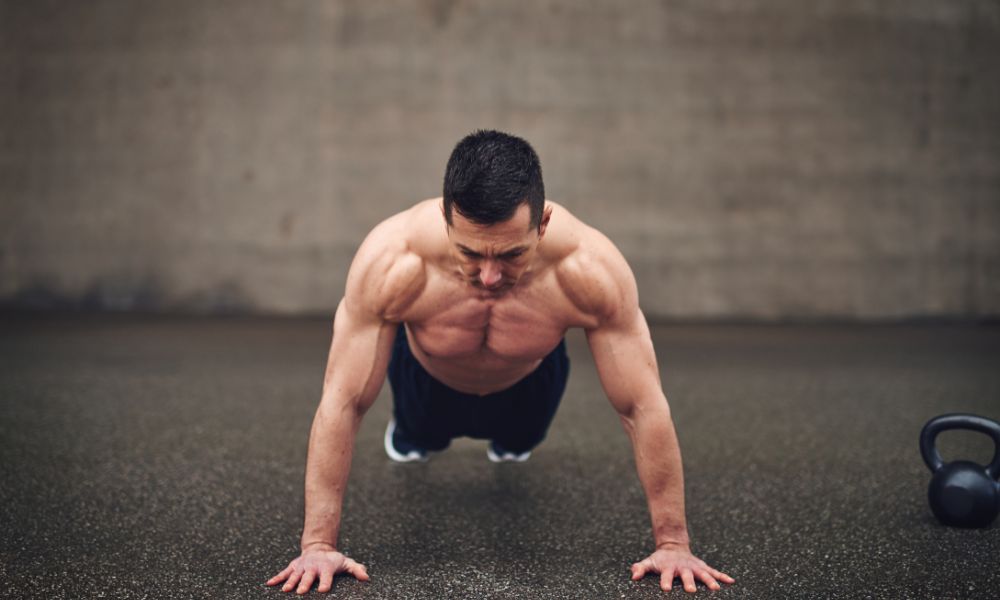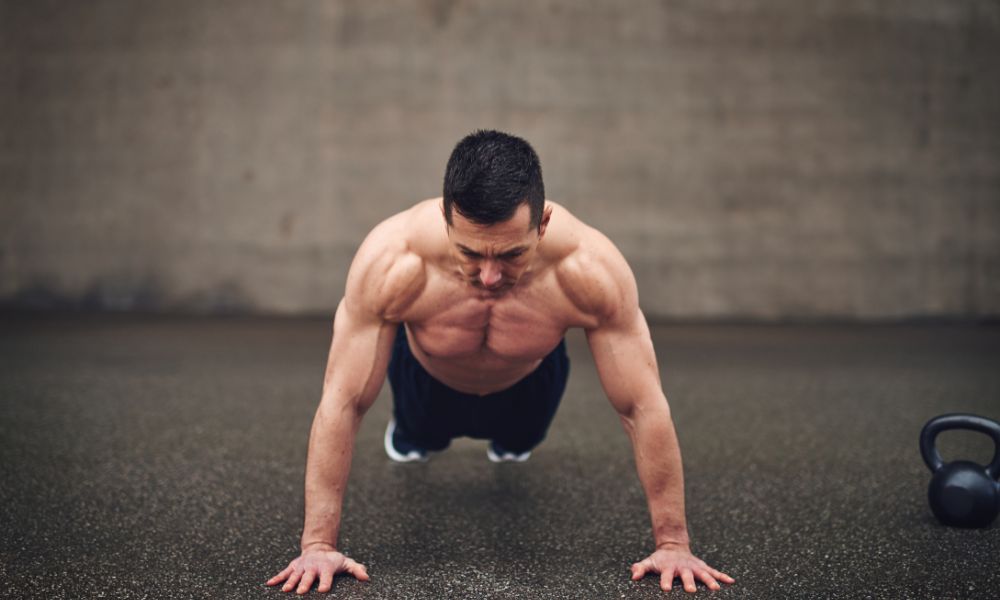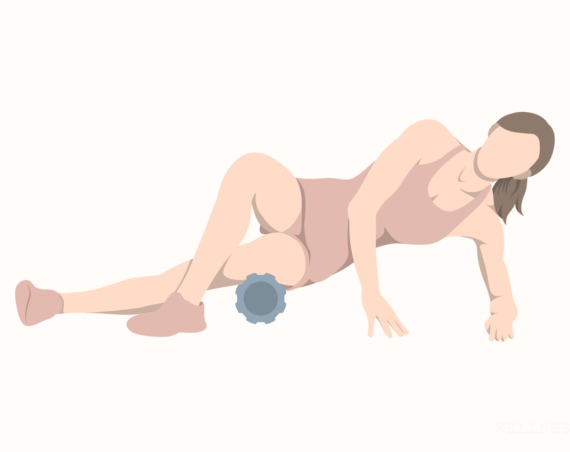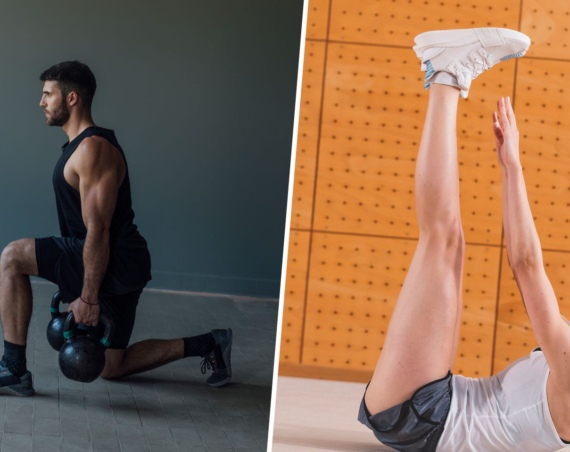
As we age, it becomes increasingly important to prioritize strength training to maintain a strong and resilient body.
Strength training not only helps to counteract the natural decline in muscle mass that occurs with age but also offers a host of benefits for overall health and well-being.
If you’re looking to build a stronger body after 50, incorporating these seven best strength training workout moves into your routine can make a significant difference.
The Benefits of Strength Training After 50

Strength training after the age of 50 offers a multitude of benefits for overall health and well-being. As we age, we naturally experience a decline in muscle mass and strength, but engaging in regular strength training can help counteract this process.
By incorporating strength training exercises into your routine, you can increase muscle mass, improve bone density, enhance joint health, and boost metabolism. Strength training also promotes better balance, stability, and posture, reducing the risk of falls and injuries.
Moreover, it enhances functional fitness, allowing you to perform everyday activities with ease and maintain independence as you age. Additionally, strength training has been shown to have positive effects on mental health, improving mood, reducing stress, and enhancing cognitive function.
Embracing strength training after 50 can have a transformative impact on your overall quality of life, helping you maintain vitality, resilience, and a strong, healthy body.
Squats
Squats are a foundational movement that targets the lower body, including the quadriceps, hamstrings, and glutes. They also engage the core for stability and balance.
Stand with your feet shoulder-width apart, toes slightly turned out. Bend your knees and lower your body as if you’re sitting back into a chair. Keep your chest up, back straight, and weight on your heels. Push through your heels to return to the starting position.
Deadlifts
Deadlifts are excellent for building overall strength, particularly in the posterior chain muscles such as the hamstrings, glutes, and lower back. They also enhance grip strength and promote good posture.
Stand with your feet hip-width apart, a dumbbell or barbell in front of you on the floor. Bend at your hips and knees, maintaining a neutral spine, and grip the weight with an overhand grip. Keep your core engaged as you stand up, pushing through your heels and extending your hips until you’re standing tall. Lower the weight back down with control.
Lunges
Lunges are effective for strengthening the legs and improving balance. They target the quadriceps, hamstrings, and glutes while also engaging the core muscles for stability.
Stand with your feet hip-width apart. Take a big step forward with one foot and lower your body, bending both knees to about 90 degrees. Keep your front knee directly above your ankle, and your back knee slightly above the ground. Push through your front heel to return to the starting position, then repeat on the other side.
Push-Ups
Push-ups are a compound exercise that engages multiple muscle groups, including the chest, shoulders, triceps, and core. They help build upper body strength and improve overall functional fitness.
Start in a high plank position with your hands slightly wider than shoulder-width apart, arms straight, and core engaged. Lower your body by bending your elbows until your chest nearly touches the ground. Push back up to the starting position, keeping your body in a straight line throughout the movement. If needed, modify by performing push-ups on your knees or against a sturdy elevated surface.
Bent-Over Rows
Bent-over rows primarily target the back muscles, including the lats, rhomboids, and rear deltoids. They help improve posture, strengthen the upper back, and promote better spinal alignment.
Hold a dumbbell or barbell with an overhand grip, hands slightly wider than shoulder-width apart. Hinge forward at your hips while keeping your back straight and knees slightly bent. Pull the weight toward your torso, squeezing your shoulder blades together. Lower the weight back down with control, maintaining proper form.
Overhead Press
The overhead press targets the shoulder muscles, including the deltoids and triceps. It helps build upper body strength and stability, which is essential for maintaining independence and performing daily activities.
Stand with your feet hip-width apart, holding a dumbbell or barbell at shoulder level with palms facing forward. Press the weight overhead, fully extending your arms without locking your elbows. Lower the weight back down to shoulder level with control.
Plank
Planks are a core-strengthening exercise that engages the entire abdominal region, including the rectus abdominis, obliques, and transverse abdominis. They also work the muscles of the lower back and promote good posture.
Begin by lying face down on the floor. Place your forearms on the ground, elbows directly under your shoulders, and lift your body off the ground, balancing on your forearms and toes. Keep your body in a straight line from head to heels, engaging your core and avoiding sagging or raising your hips.
The Final Takeaway
When performing these strength training exercises, it’s important to use proper form, start with light weights or body weight, and gradually increase the intensity as your strength improves. Aim for two to three sessions per week, allowing for adequate rest and recovery between workouts.
Strength training after 50 is not only about building muscle but also about maintaining bone density, improving joint health, and boosting overall functional fitness.
By incorporating these seven best strength training workout moves into your routine, you can build a stronger body, enhance your quality of life, and enjoy the countless benefits that come with a fit and resilient physique.
Remember, it’s never too late to start strength training and reap the rewards of a stronger, healthier you.


